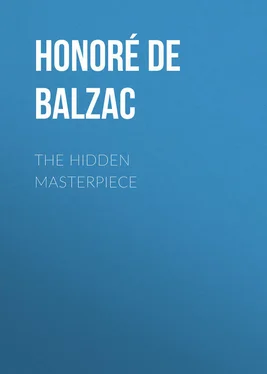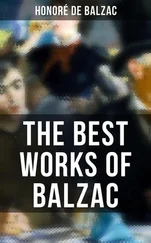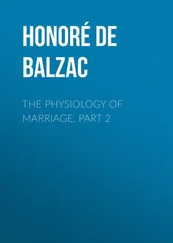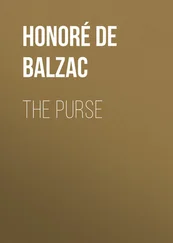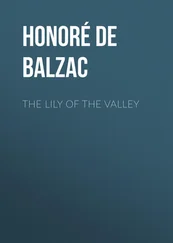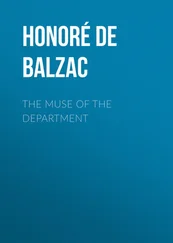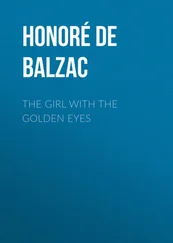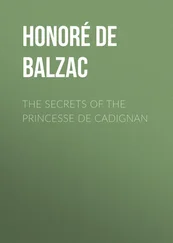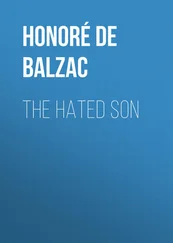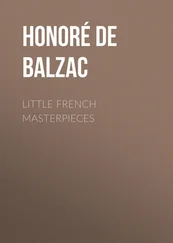Honoré Balzac - The Hidden Masterpiece
Здесь есть возможность читать онлайн «Honoré Balzac - The Hidden Masterpiece» — ознакомительный отрывок электронной книги совершенно бесплатно, а после прочтения отрывка купить полную версию. В некоторых случаях можно слушать аудио, скачать через торрент в формате fb2 и присутствует краткое содержание. Жанр: literature_19, foreign_antique, foreign_prose, на английском языке. Описание произведения, (предисловие) а так же отзывы посетителей доступны на портале библиотеки ЛибКат.
- Название:The Hidden Masterpiece
- Автор:
- Жанр:
- Год:неизвестен
- ISBN:нет данных
- Рейтинг книги:3 / 5. Голосов: 1
-
Избранное:Добавить в избранное
- Отзывы:
-
Ваша оценка:
- 60
- 1
- 2
- 3
- 4
- 5
The Hidden Masterpiece: краткое содержание, описание и аннотация
Предлагаем к чтению аннотацию, описание, краткое содержание или предисловие (зависит от того, что написал сам автор книги «The Hidden Masterpiece»). Если вы не нашли необходимую информацию о книге — напишите в комментариях, мы постараемся отыскать её.
The Hidden Masterpiece — читать онлайн ознакомительный отрывок
Ниже представлен текст книги, разбитый по страницам. Система сохранения места последней прочитанной страницы, позволяет с удобством читать онлайн бесплатно книгу «The Hidden Masterpiece», без необходимости каждый раз заново искать на чём Вы остановились. Поставьте закладку, и сможете в любой момент перейти на страницу, на которой закончили чтение.
Интервал:
Закладка:
Honoré de Balzac
The Hidden Masterpiece
CHAPTER I
On a cold morning in December, towards the close of the year 1612, a young man, whose clothing betrayed his poverty, was standing before the door of a house in the Rue des Grands-Augustine, in Paris. After walking to and fro for some time with the hesitation of a lover who fears to approach his mistress, however complying she may be, he ended by crossing the threshold and asking if Maitre Francois Porbus were within. At the affirmative answer of an old woman who was sweeping out one of the lower rooms the young man slowly mounted the stairway, stopping from time to time and hesitating, like a newly fledged courier doubtful as to what sort of reception the king might grant him.
When he reached the upper landing of the spiral ascent, he paused a moment before laying hold of a grotesque knocker which ornamented the door of the atelier where the famous painter of Henry IV. – neglected by Marie de Medicis for Rubens – was probably at work. The young man felt the strong sensation which vibrates in the soul of great artists when, in the flush of youth and of their ardor for art, they approach a man of genius or a masterpiece. In all human sentiments there are, as it were, primeval flowers bred of noble enthusiasms, which droop and fade from year to year, till joy is but a memory and glory a lie. Amid such fleeting emotions nothing so resembles love as the young passion of an artist who tastes the first delicious anguish of his destined fame and woe, – a passion daring yet timid, full of vague confidence and sure discouragement. Is there a man, slender in fortune, rich in his spring-time of genius, whose heart has not beaten loudly as he approached a master of his art? If there be, that man will forever lack some heart-string, some touch, I know not what, of his brush, some fibre in his creations, some sentiment in his poetry. When braggarts, self-satisfied and in love with themselves, step early into the fame which belongs rightly to their future achievements, they are men of genius only in the eyes of fools. If talent is to be measured by youthful shyness, by that indefinable modesty which men born to glory lose in the practice of their art, as a pretty woman loses hers among the artifices of coquetry, then this unknown young man might claim to be possessed of genuine merit. The habit of success lessens doubt; and modesty, perhaps, is doubt.
Worn down with poverty and discouragement, and dismayed at this moment by his own presumption, the young neophyte might not have dared to enter the presence of the master to whom we owe our admirable portrait of Henry IV., if chance had not thrown an unexpected assistance in his way. An old man mounted the spiral stairway. The oddity of his dress, the magnificence of his lace ruffles, the solid assurance of his deliberate step, led the youth to assume that this remarkable personage must be the patron, or at least the intimate friend, of the painter. He drew back into a corner of the landing and made room for the new-comer; looking at him attentively and hoping to find either the frank good-nature of the artistic temperament, or the serviceable disposition of those who promote the arts. But on the contrary he fancied he saw something diabolical in the expression of the old man’s face, – something, I know not what, which has the quality of alluring the artistic mind.
Imagine a bald head, the brow full and prominent and falling with deep projection over a little flattened nose turned up at the end like the noses of Rabelais and Socrates; a laughing, wrinkled mouth; a short chin boldly chiselled and garnished with a gray beard cut into a point; sea-green eyes, faded perhaps by age, but whose pupils, contrasting with the pearl-white balls on which they floated, cast at times magnetic glances of anger or enthusiasm. The face in other respects was singularly withered and worn by the weariness of old age, and still more, it would seem, by the action of thoughts which had undermined both soul and body. The eyes had lost their lashes, and the eyebrows were scarcely traced along the projecting arches where they belonged. Imagine such a head upon a lean and feeble body, surround it with lace of dazzling whiteness worked in meshes like a fish-slice, festoon the black velvet doublet of the old man with a heavy gold chain, and you will have a faint idea of the exterior of this strange individual, to whose appearance the dusky light of the landing lent fantastic coloring. You might have thought that a canvas of Rembrandt without its frame had walked silently up the stairway, bringing with it the dark atmosphere which was the sign-manual of the great master. The old man cast a look upon the youth which was full of sagacity; then he rapped three times upon the door, and said, when it was opened by a man in feeble health, apparently about forty years of age, “Good-morning, maitre.”
Porbus bowed respectfully, and made way for his guest, allowing the youth to pass in at the same time, under the impression that he came with the old man, and taking no further notice of him; all the less perhaps because the neophyte stood still beneath the spell which holds a heaven-born painter as he sees for the first time an atelier filled with the materials and instruments of his art. Daylight came from a casement in the roof and fell, focussed as it were, upon a canvas which rested on an easel in the middle of the room, and which bore, as yet, only three or four chalk lines. The light thus concentrated did not reach the dark angles of the vast atelier; but a few wandering reflections gleamed through the russet shadows on the silvered breastplate of a horseman’s cuirass of the fourteenth century as it hung from the wall, or sent sharp lines of light upon the carved and polished cornice of a dresser which held specimens of rare pottery and porcelains, or touched with sparkling points the rough-grained texture of ancient gold-brocaded curtains, flung in broad folds about the room to serve the painter as models for his drapery. Anatomical casts in plaster, fragments and torsos of antique goddesses amorously polished by the kisses of centuries, jostled each other upon shelves and brackets. Innumerable sketches, studies in the three crayons, in ink, and in red chalk covered the walls from floor to ceiling; color-boxes, bottles of oil and turpentine, easels and stools upset or standing at right angles, left but a narrow pathway to the circle of light thrown from the window in the roof, which fell full on the pale face of Porbus and on the ivory skull of his singular visitor.
The attention of the young man was taken exclusively by a picture destined to become famous after those days of tumult and revolution, and which even then was precious in the sight of certain opinionated individuals to whom we owe the preservation of the divine afflatus through the dark days when the life of art was in jeopardy. This noble picture represents the Mary of Egypt as she prepares to pay for her passage by the ship. It is a masterpiece, painted for Marie de Medicis, and afterwards sold by her in the days of her distress.
“I like your saint,” said the old man to Porbus, “and I will give you ten golden crowns over and above the queen’s offer; but as to entering into competition with her – the devil!”
“You do like her, then?”
“As for that,” said the old man, “yes, and no. The good woman is well set-up, but – she is not living. You young men think you have done all when you have drawn the form correctly, and put everything in place according to the laws of anatomy. You color the features with flesh-tones, mixed beforehand on your palette, – taking very good care to shade one side of the face darker than the other; and because you draw now and then from a nude woman standing on a table, you think you can copy nature; you fancy yourselves painters, and imagine that you have got at the secret of God’s creations! Pr-r-r-r! – To be a great poet it is not enough to know the rules of syntax and write faultless grammar.
Читать дальшеИнтервал:
Закладка:
Похожие книги на «The Hidden Masterpiece»
Представляем Вашему вниманию похожие книги на «The Hidden Masterpiece» списком для выбора. Мы отобрали схожую по названию и смыслу литературу в надежде предоставить читателям больше вариантов отыскать новые, интересные, ещё непрочитанные произведения.
Обсуждение, отзывы о книге «The Hidden Masterpiece» и просто собственные мнения читателей. Оставьте ваши комментарии, напишите, что Вы думаете о произведении, его смысле или главных героях. Укажите что конкретно понравилось, а что нет, и почему Вы так считаете.
